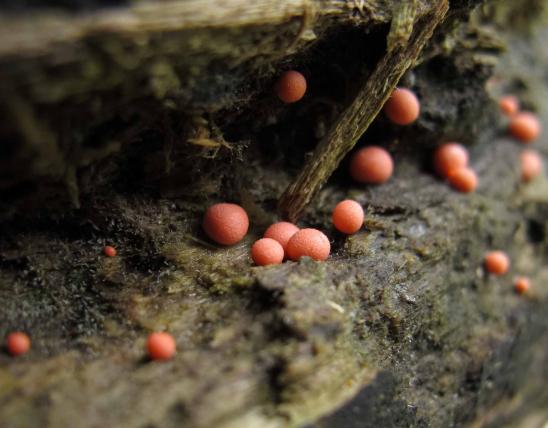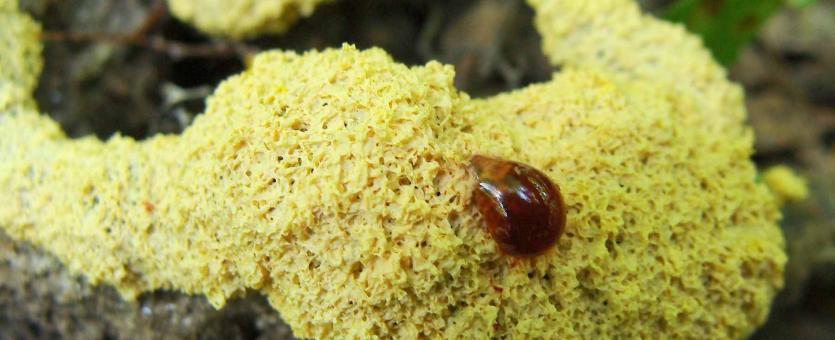
Dog vomit slime mold (also called scrambled egg slime mold) is a yellow, tan, or whitish fluffy or foamy-looking mass, becoming dried, crusty, and dark, eventually releasing many, many spores. Seen in late spring through fall; common when it is hot and humid. Plasmodium (growth) stage a plate-sized, irregular mass that "creeps" gradually over wood mulch or other substrate; yellow, tan, or whitish; texture fluffy or foamy, slimy, soft, sometimes bleeding dark fluid. Sporangium (spore-producing) stage dries and hardens; becoming dark tan, brown, or black; eventually becoming a mass of dark, dusty spores. Spores pinkish-brown. Spores magnified are round, slightly spiny.
Lookalikes: There are many other species of slime molds, but this is one of the most common and noticed, as it looks amazingly like a foamy or spongy patch of dog vomit or scrambled eggs.
Width: to about 8 inches; height: to about 1¼ inches.
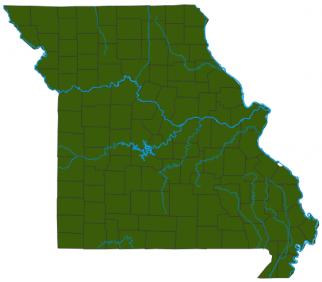
Statewide.
Habitat and Conservation
Not a true mushroom or fungus. Grows in irregular patches on mulch, decaying wood, or other rotting plant material, in warm, humid weather. It "creeps" gradually across the mulch surface, sometimes onto nearby living plants. Many people discover it on landscaping mulch and wonder what it is. When you run water onto its spore-producing stage, the water either rolls off it without moistening it, or else a cloud of spores rises up like smoke.
Status
Not edible. There are reports that it is eaten in Mexico, however. This species is not known to cause sickness in humans, although the many dusty spores can irritate people with allergies, asthma, or other respiratory conditions. Although it can be unsightly in a flower garden, it is fairly impossible to get rid of this slime mold. Water only helps spread it, and completely changing mulch is only a temporary solution.
Life Cycle
This isn’t a mushroom at all. It’s a slime mold, more closely related to single-celled organisms. It has two life stages. The first, “plasmodium” stage is like a huge amoeba that creeps like a blob over dead wood and other materials, engulfing and “eating” bacteria, yeasts, and fungi. When ready to reproduce — often when food runs out or conditions become too dry — it enters a dry, dusty “sporangia” stage, making spores that blow away to start new plasmodia elsewhere.
Human Connections
Although it can be a nuisance to gardeners, this slime mold has proven useful for scientists studying how genes work within cells. This slime mold also produces chemicals that may be useful in treating cancer.
Ecosystem Connections
This is one of many strange, humble organisms that feast on decaying organic materials and the microbes that inhabit them. They have an incredibly important role in breaking down the tough materials living things are made of and returning those nutrients to the soil.

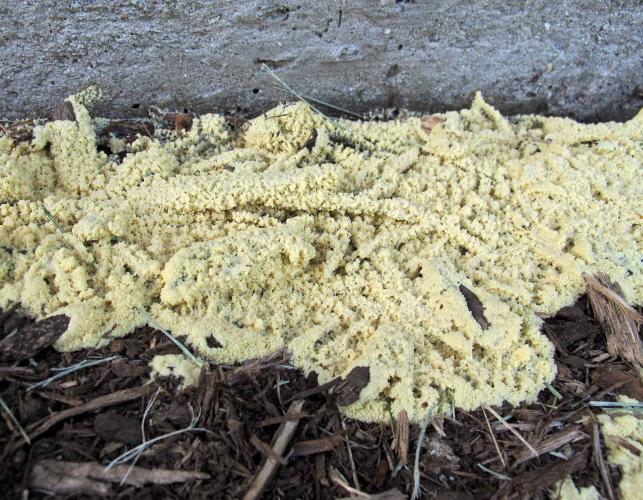
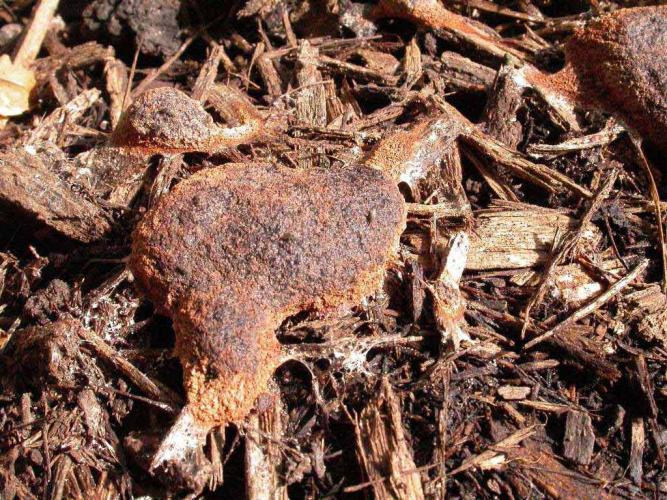
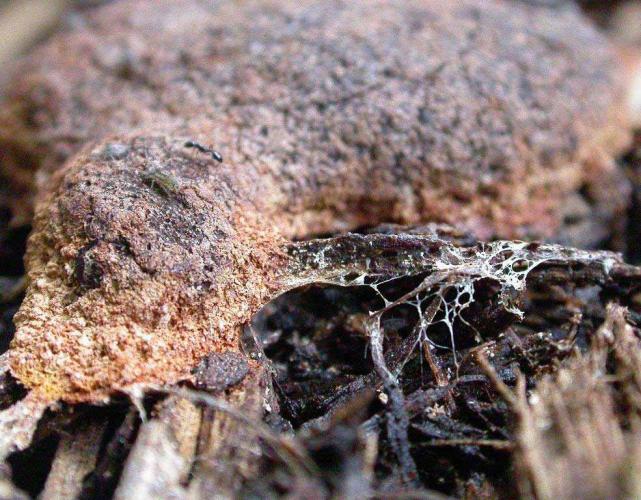

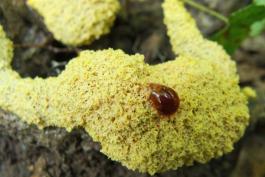
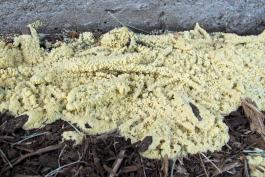
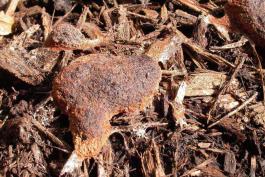
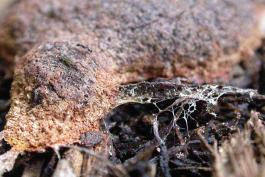
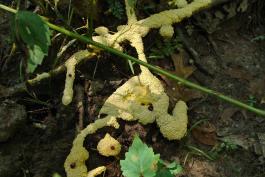
Mushrooms are a lot like plants, but they lack chlorophyll and have to take nutrients from other materials. Mushrooms are neither plants nor animals. They are in a different kingdom — the fungi. Fungi include the familiar mushroom-forming species, plus the yeasts, molds, smuts, and rusts.
Always be cautious when eating edible mushrooms. Be absolutely sure of the ID, and only eat a small amount the first time you try it to avoid a reaction..






















